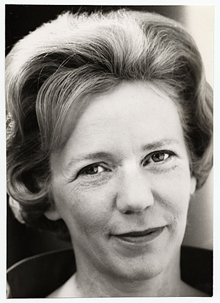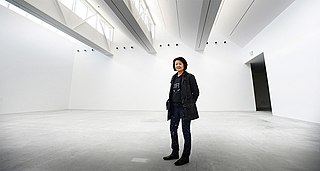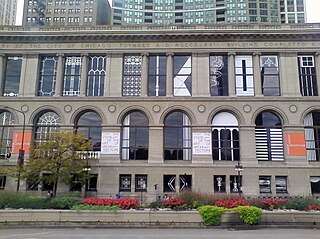Related Research Articles

Frank Owen Gehry is a Canadian-born American architect and designer. A number of his buildings, including his private residence in Santa Monica, California, have become world-renowned attractions.

The Solomon R. Guggenheim Museum, often referred to as The Guggenheim, is an art museum at 1071 Fifth Avenue between 88th and 89th Streets on the Upper East Side of Manhattan in New York City. It is the permanent home of a continuously expanding collection of Impressionist, Post-Impressionist, early Modern, and contemporary art and also features special exhibitions throughout the year. It was established by the Solomon R. Guggenheim Foundation in 1939 as the Museum of Non-Objective Painting, under the guidance of its first director, Hilla von Rebay. The museum adopted its current name in 1952, three years after the death of its founder Solomon R. Guggenheim.

Dame Zaha Mohammad Hadid was an Iraqi-British architect, artist and designer, recognized as a major figure in architecture of the late-20th and early-21st centuries. Born in Baghdad, Iraq, Hadid studied mathematics as an undergraduate and then enrolled at the Architectural Association School of Architecture in 1972. In search of an alternative system to traditional architectural drawing, and influenced by Suprematism and the Russian avant-garde, Hadid adopted painting as a design tool and abstraction as an investigative principle to "reinvestigate the aborted and untested experiments of Modernism [...] to unveil new fields of building".

Diana Marie Lynn was an American actress. She built her career by starring in Paramount Pictures films and various television series during the 1940s and 1950s. Two stars on Hollywood Walk of Fame are dedicated to her name.

The Skyscraper Museum is an architecture museum located in Battery Park City, Manhattan, New York City and founded in 1996. As the name suggests, the museum focuses on high-rise buildings as "products of technology, objects of design, sites of construction, investments in real estate, and places of work and residence." The Skyscraper Museum also celebrates the architectural heritage of New York and the forces and people who created New York's skyline. Before moving to the current and permanent location in Battery Park City in 2004, the museum was a nomadic institution, holding pop-up exhibitions in four temporary donated spaces around Lower Manhattan since 1996.

Blobitecture, blobism and blobismus are terms for a movement in architecture in which buildings have an organic, amoeba-shaped building form. Though the term blob architecture was already in vogue in the mid-1990s, the word blobitecture first appeared in print in 2002, in William Safire's "On Language" column in the New York Times Magazine. Though intended in the Safire article to have a derogatory meaning, the word stuck and is often used to describe buildings with curved and rounded shapes.
Sarah Sze is an American artist and professor of visual arts at Columbia University. She has exhibited internationally and her works are in the collections of several major museums. Sze's work explores the role of technology and information in contemporary life utilizing everyday materials. Drawing from Modernist traditions, Sze's work often represents objects caught in suspension.
R. H. Quaytman is an American contemporary artist, best known for paintings on wood panels, using abstract and photographic elements in site-specific "Chapters", now numbering 35. Each chapter is guided by architectural, historical and social characteristics of the original site. Since 2008, her work has been collected by a number of modern art museums. She is also an educator and author based in Connecticut.
Michael Haverland is an architect based in New York City and East Hampton, New York. His work includes residential, retail, commercial, institutional and urban design projects. Most recently, he collaborated with Calvin Klein on the design of a new house in Southampton, New York.

Hugh Hardy was an American architect, known for designing and revitalizing theaters, performing arts venues, public spaces, and cultural facilities across the United States.

Noel Phyllis Birkby was an American architect, feminist, filmmaker, teacher, and founder of the Women's School of Planning and Architecture.

Aline Bernstein Saarinen was an American art and architecture critic, author and television journalist.
Julie Otsuka is an American author.
George Joseph Ranalli is an American modernist architect, scholar, curator, and fellow of the American Institute of Architects. He is based in New York City.
Peggy Deamer is an architect, architectural educator, and Emeritus Professor of Architecture at Yale University. Her research explores the nature of creative work, stretching from a psychoanalytic interpretation of art production and reception – initiated in the dissertation on Adrian Stokes, who was analyzed by Melanie Klein – to neo-Marxist examinations of creative labor. She is the founding member of the international advocacy group, The Architecture Lobby (TAL).

Toshiko Mori is a Japanese architect and the founder and principal of New York–based Toshiko Mori Architect, PLLC and Vision Arc. She is also the Robert P. Hubbard Professor in the Practice of Architecture at the Harvard University Graduate School of Design. In 1995, she became the first female faculty member to receive tenure at the GSD.

The Chicago Architecture Biennial is an international exhibition of architectural ideas, projects and displays. It seeks "to provide a platform for groundbreaking architectural projects and spatial experiments that demonstrate how creativity and innovation can radically transform our lived experience." Founded in 2014, the biennial is managed by a charitable corporation under the auspices of the city's Cultural Affairs department, and sponsored by public and private organizations and individuals.
Mildred "Mickey" Friedman was an American architecture and design curator and editor of the journal Design Quarterly.
Rose Tarlow is an interior designer, furniture and textile designer, and author based in Los Angeles, California. She is known for having designed elegant residences for a small number of notable clients. She is the author of Private House, a memoir of her interior design activities, first published in 2001.
Sarah Pettit was an American journalist, LGBTQ+ rights activist, and editor. She was known for being the founding editor of Out Magazine alongside Michael Goff.
References
- ↑ "Julie S. Iovine". Washington Post . July 27, 2003. Retrieved December 15, 2020.
- 1 2 "Surgeon Vincent M. Iovine dies at 82". The Washington Post. March 14, 1993. Retrieved December 30, 2020.
- 1 2 3 Davis, Kathleen (November 2, 2014). "Renowned arts journalist Iovine discusses changing landscape". The Michigan Daily . Retrieved December 15, 2020.
- 1 2 "Yale president blasts label as 'gay school'". Salina Journal . Associated Press. September 30, 1987. p. 26 – via Newspapers.com.

- ↑ Bertram, Bonnie; Iovine, Julie V. (November 14, 2017). "We Tried to Stop James Toback Decades Ago". Vanity Fair . Retrieved December 16, 2020.
- ↑ Turner, Karen (November 14, 2017). "These women exposed a famous director's unwanted advances in 1989. Only now is he being busted". vox.com. Retrieved December 15, 2020.
- ↑ "Julie V. Iovine: Recent and archived work by Julie V. Iovine for The New York Times". The New York Times . Retrieved December 15, 2020.
- ↑ Scott, Felicity D. (October 2003). "Involuntary Prisoners of Architecture". October. 106. MIT Press: 76. doi:10.1162/016228703322791034. JSTOR 3397633. S2CID 57563048.
- 1 2 Chaban, Matt (August 16, 2012). "Trade-ing Up: Architect's Newspaper Editors on the Move; Readership Grows Despite Shrinking Industry". The Observer. Retrieved December 15, 2020.
- ↑ "Historic Districts Council Preservation Awards". May 16, 2011. Retrieved December 15, 2020.
- ↑ "Design editors reflect on architecture journalism in the 21st century". The Architect's Newspaper . November 16, 2018. Retrieved December 17, 2020.
- ↑ "WSJ Arts". Wall Street Journal . Retrieved December 15, 2020.
- ↑ "Lecture: Julie Iovine". Taubman College of Architecture and Urban Planning. October 28, 2014. Retrieved December 15, 2020.
- ↑ The Impeccable Gardener. WorldCat. OCLC 671279824.
- ↑ Home: Chic Simple. WorldCat. OCLC 26974562.
- ↑ Wohnen: der Stil der 90er Jahre. WorldCat. OCLC 165112835.
- ↑ Guggenheim New York. WorldCat. OCLC 460171993.
- ↑ Michael Graves: Compact Design Portfolio. WorldCat. OCLC 925193853.
- ↑ Modern Americana. WorldCat. OCLC 276222508.
- ↑ Civic Action. WorldCat. OCLC 830674940.
- ↑ New York in Fifty Design Icons. WorldCat. OCLC 1232724854.
- ↑ Ravo, Nick (September 29, 1987). "Yale President Rebuts Story That Depicted School as 'Gay'". The New York Times.
- ↑ Connecticut Marriage Index, 1959–2001.
- ↑ Princeton Architectural Press
- ↑ "Julie S. Iovine Obituary (2003) the Washington Post". Legacy.com .
- ↑ "Alan Hruska, born Circa 1934". www.myheritage.com.
- ↑ Lee, Nathan (March 5, 2009). "Ivy League Blues". The New York Times . Retrieved December 16, 2020.(subscription required)
- ↑ "Alan Hruska" . Retrieved December 15, 2020.